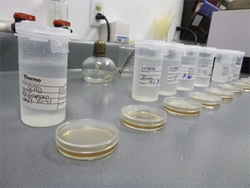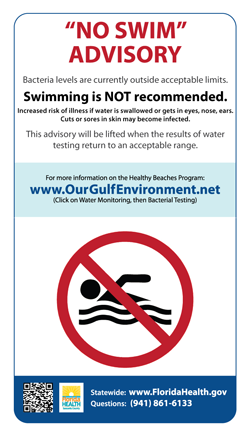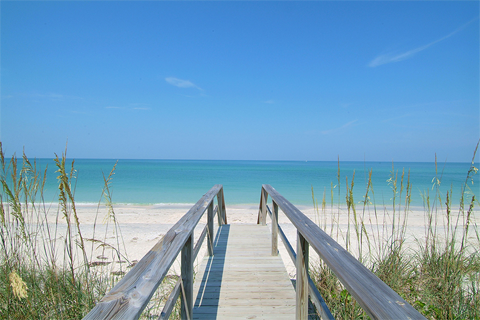It's a New Day in Public Health.
The Florida Department of Health works to protect, promote, and improve the health of all people in Florida through integrated state, county, and community efforts.

| ||
To view the most recent beach water test results, click here. Sample Sites from North to South: Longboat Key Public Beach |
Beach Water Quality
Main Administrative Office
- 941-861-2900
- DOHSarasotaInfo@FLHealth.gov
-
Mailing Address
William L. Little Health and Human Services Center
2200 Ringling Blvd
Sarasota FL 34237

Water Quality and Health Risks

When do health officials issue beach advisories?
Health officials use strict standards issued by the U.S. Environmental Protection Agency (EPA) that are highly protective of human health in determining when advisories are necessary.
Samples are collected weekly and analyzed by a state certified laboratory.
When the level of bacteria in two consecutive water samples exceeds these standards, a precautionary “no-swim” advisory is issued to beachgoers stating that it may not be healthy for you to go in the water.
This advisory is shared with local media outlets, on this website and on signs posted at the affected beach.
DOH-Sarasota does not have the authority to close the beach.
When a “no-swim” advisory is in place, the public is still welcome to enjoy the beach itself. However, health officials recommend
- Wading and swimming
- Recreational water activities
Shellfish such as crabs and shrimp collected in the immediate area of
How long do “no-swim” advisories last?
DOH-Sarasota also works closely with local, county and state officials and other agencies to help investigate and rule out potential sources of contamination such as sewage spills or stormwater runoff.
“No Swim” advisories remain in place until samples collected show acceptable water quality.



Connect with DOH